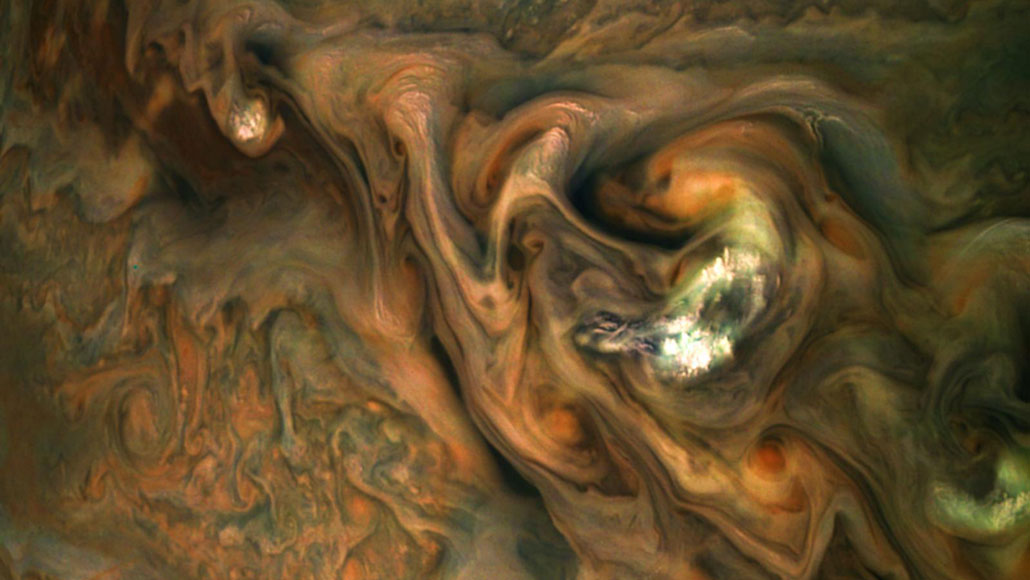How the laws of physics constrain the size of alien raindrops
The size of raindrops is similar no matter what they’re made of or what planet they fall on

The swirling clouds of Jupiter, captured by NASA’s Juno spacecraft, could release semisolid ammonia slushballs of precipitation. New work suggests that any liquid rain on Jupiter would be similar in some ways to rain on any other cloudy world.
Gerald Eichstadt/MSSS/SwRI/JPL-Caltech/NASA







